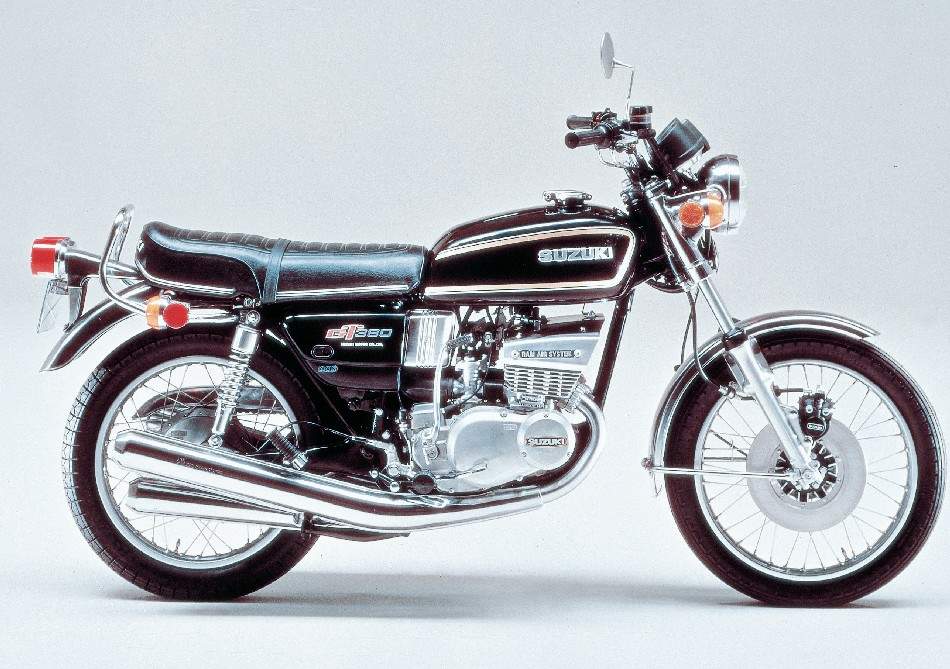
|
|
|
|
|
|
Classic Bikes
Custom Bikes
Individual
Racing Bikes AJP
AJS
Aprilia
Ariel
Avinton / Wakan
Bajaj
Benelli
Beta
Bimota
BMW
Brough Superior
BRP Cam-Am
BSA
Buell / EBR
Bultaco
Cagiva
Campagna
CCM
CF Moto
Combat Motors
Derbi
Deus
Ducati
Excelsior
GASGAS
Ghezzi Brian
Gilera
GIMA
Harley Davidson
Hero
Highland
Honda
Horex
Husaberg
Husqvarna
Hyosung
Indian
Jawa
Kawasaki
KTM
KYMCO
Laverda
Lazareth
Magni
Maico
Mash
Matchless
Mondial
Moto Guzzi
Moto Morini
MV Agusta
MZ / MuZ
NCR
Norton
NSU
Paton
Peugeot
Piaggio
Revival Cycles
Roland Sands
Royal Enfield
Sachs
Sherco
Sunbeam
Suzuki
SWM
SYM
Triumph
TVS
Ural
Velocette
Vespa
Victory
Vincent
VOR
Voxan
Vyrus
Walt Siegl
Walz
Wrenchmonkees
Wunderlich
XTR / Radical
Yamaha
Zero
Video
Technical
Complete Manufacturer List
|
Suzuki GT 380
Suzuki
launched its
air-cooled two-stroke triples
GT380 and GT550
in 1972. An
water-cooled three-cylinder
GT750 had already
been presented
a
year earlier and
the 380 and
550 followed the
design of the
flagship model.
The Ram Air
System (introduced
in all of
the air-cooled
GT
models) that
forced the cool
air to pass
through the
cylinders and behind
the block was
a new
developement, tested earlier
on Suzuki's
TR500
racers. It is
an simply an
air scoop that
ducts cold air
directly onto
the
cylinder head
the
help the cooling
on the engine.
It was a
known problem
that two-stroke engines
lost power when
the cylinder
head
temperature rose
too much. Cooling
problem plagued
other two-stroke triples
but the Ram
Air System made
the Suzuki GT
triples less
suspective to the
charasteric two-stroke
power loss caused
by too high
a cylinder head
temperature after
a long, hard
run. Nevertheless
the GT triples
still had a
reputation for
the middle piston
seizing. 
|
|
|
Any corrections or more information on these motorcycles will be kindly appreciated. |